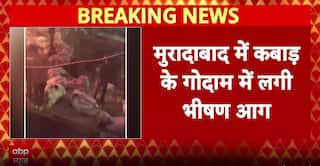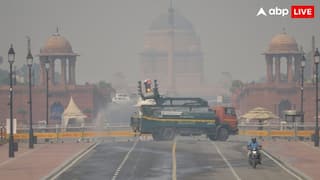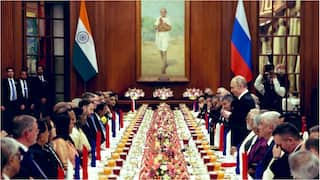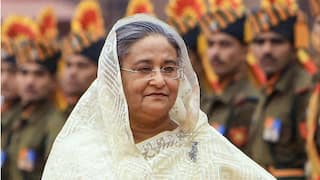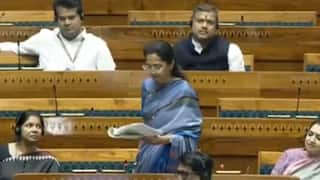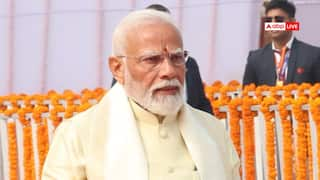Explorer
Is SC right on SC/ST Act?

Our Supreme Court's campaign against the 'misuse' of special laws continues. A few days ago, a two-judge bench of Justices AK Goel and UU Lalit issued new directions to prevent what they say is the "rampant misuse" of the Scheduled Castes and Scheduled Tribes (Prevention of Atrocities) Act. What these directions are actually likely to do is gut a law crucial to protecting Dalit and Adivasi rights.
On the face of it, much of the judgement aims to uphold the fair trial rights of criminal suspects. The Court rightly observes that wrongful arrests and detention violate the constitutional right to personal liberty. It defends the principles of due process and presumption of innocence, which are too often casually ignored in the Indian criminal justice system.
But then the judgement makes some odd leaps of logic. Quoting some High Court judgements and statistics from the National Crime Records Bureau (which we'll return to), the Court concludes that the Atrocities Act may have become "a charter for exploitation or oppression", "an instrument to blackmail or to wreak personal vengeance" and a law which is "perpetuating casteism".
It goes on to issue several directions, including one potentially destructive one: that the police mandatorily conduct a 'preliminary inquiry' into any complaint of caste-based discrimination or violence before registering a First Information Report.
This isn't the first time that the two judges of the Supreme Court has raised questions about the abuse of protective laws. Last July, the same bench issued directions to prevent the 'misuse' of Section 498A of the Indian Penal Code (the 'anti-dowry' law). They wanted states to set up 'family welfare' committees to vet complaints of dowry harassment before suspects could be arrested – (a direction which thankfully a larger bench of the Supreme Court later suggested would be revisited).
[Think for a minute about the kinds of laws most frequently accused of being misused: the anti-sexual harassment law (meant to protect women at work); the anti-dowry law (meant to protect married women); the anti-caste atrocities law (meant to protect Dalits and Adivasis). It isn't a coincidence that laws enacted to protect the rights of people in vulnerable situations are those most often accused of misuse.]
Two questions arise about the judgements in both cases. One, is there any truth to the charge that these laws are more prone to misuse than others? And two, are the measures suggested the best ones to deal with fair trial concerns?
On the first, let’s look at the statistics put forward by the Court in Tuesday’s judgement. It states that according to NCRB data for 2015: “5347 cases were found to be false cases out of the SC cases and 912 were found to be false cases out of ST cases.”
Dalit rights organizations have found that police personnel from dominant castes are often reluctant to register crimes against Dalits, and quick to dismiss them as false. But let’s for a moment run with these figures, which are from the NCRB 2016 ‘Crimes in India’ report. This report also states that the total number of SC and ST cases reported or pending investigation was 56299 and 9096, respectively. Which essentially means that about 10%, or one in ten cases were found to be false. Which also means that nine in ten were not. Hardly a case of “rampant misuse”.
Compare these figures to other crimes. The corresponding number for ‘false’ cases of kidnapping or abduction is 9%. The police also claimed that 12% of all forgery cases were false. Ever seen anyone demand a rollback of the kidnapping or forgery laws?
The judgment also states: “In the year 2015, out of 15638 cases decided by the courts, 11024 cases resulted in acquittal or discharge, 495 cases were withdrawn and 4119 cases resulted in conviction.” Conviction rate figures are also frequently cited by opponents of Section 498A as ‘evidence’ of its misuse. The judgement seems to suggest that the fact that ‘only’ 26% of cases under the Atrocities Act end in convictions is reason enough to assume the law is being abused.
Ignore for a minute the everyday delays in investigations and trials, the reports of harassment and intimidation of victims and witnesses, and the systemic barriers to justice for Dalits and Adivasis – all of which affect conviction rates. Even if one were to use these rates as a standard to measure ‘misuse’, the conviction rates for cheating, extortion, and arson according to the latest NCRB data are 20%, 19% and 16%, respectively. I’m yet to see anyone claim that these laws are misused.
The point is not that Section 498A or the Atrocities Act are incapable of being misused. Every law can be, and is, abused. But to selectively look at the operation of certain laws –in a manner that ignores the realities of caste and gender injustice in India – and conclude that they are being particularly misused, is plain wrong.
The second issue is whether the directions issued by the Court are the right way to address fair trial concerns. India lacks a victim or witness protection programme, so people in vulnerable situations who complain about caste or gender violence are often likely to face harassment and intimidation from suspects. In addition, police often try to avoid registering FIRs. In this light, introducing a ‘family welfare committee’ to vet complaints, or insisting that the police conduct a ‘preliminary inquiry’ before registering an FIR, adds another hurdle to accessing justice.
To take just one example, last year, nearly a hundred Adivasi villagers in Raigarh, Chhattisgarh, tried to file FIRs under the Atrocities Act against what they said was the forced dispossession of their land through threats, intimidation and misinformation by agents acting on behalf of private companies. The SC&ST police station in Raigarh accepted the complaints at first, but then used the ruse of a ‘preliminary inquiry’ to delay the investigation. Some weeks later, they flatly refused to register FIRs.
Indian law already has safeguards against the risk of false cases. Anyone who falsely charges a person with an offence with the intention of causing injury can face imprisonment for up to seven years. Giving false evidence and fabricating evidence are also criminal offences. These provisions, if properly enforced by the police and the judiciary, could effectively deter false complaints.
What we don’t need are more judgements which blunt protective laws and obstruct the rights that Parliament has recognized.
The author is Executive Director of Amnesty International India and tweets at @aakar_amnesty
Disclaimer: The opinions, beliefs and views expressed by the various authors and forum participants on this website are personal and do not reflect the opinions, beliefs and views of ABP News Network Pvt Ltd.
Follow Blog News on ABP Live for more latest stories and trending topics. Watch breaking news and top headlines online on ABP News LIVE TV
View More












